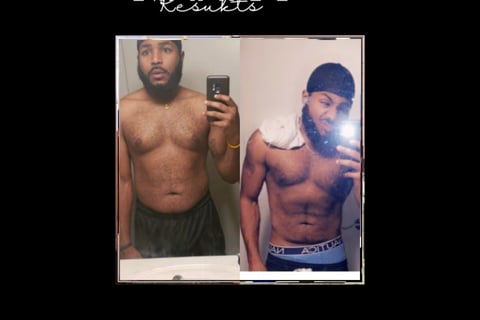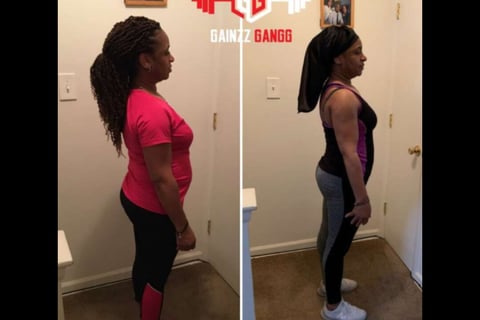Understanding BMI & BMR for Effective Fat Loss
Explore the significance of BMI and BMR in your weight loss journey. Learn how to calculate these vital metrics and use them to effectively burn belly fat and achieve your fitness goals.
Coach Ant
5/9/20253 min read


If you’re trying to lose weight, burn belly fat, or finally get your health in check, you can’t just rely on what the scale tells you. The scale don’t know if you’re losing fat or muscle, if you’re hydrated or bloated. That’s why you need to understand two powerful tools in the weight loss game: BMI (Body Mass Index) and BMR (Basal Metabolic Rate). These numbers give you the real insight into what’s goin’ on with your body, and more importantly, how to move smart on your fat loss journey.
What Is BMI and Why Does It Matter?
BMI stands for Body Mass Index. It’s a number based on your height and weight, used to categorize you as underweight, normal weight, overweight, or obese. Is it perfect? Nah. But it’s a solid starting point to get a general idea of whether your weight is in a healthy range.
To calculate your BMI:
BMI = (Weight in pounds / Height in inches²) x 703
Example:
You weigh 200 pounds and you’re 5’5 (65 inches).
BMI = (200 / 4225) x 703 = 33.3 (classified as obese)
Now before you panic, BMI don’t measure muscle. So if you’re muscular, your BMI might look higher even if you’re lean. But for most people struggling with fat loss, BMI is a reality check. It lets you know if your weight is increasing your risk for heart disease, diabetes, and other health problems.
What Is BMR and Why You Should Care About It
BMR stands for Basal Metabolic Rate. This is the number of calories your body needs just to survive—breathing, thinking, digesting, even laying in bed doing absolutely nothing. This number is your baseline. If you eat more than your BMR and don’t move enough, the extra calories get stored as fat.
BMR is crucial because it helps you figure out how many calories you should be eating per day to maintain your weight—or create a deficit to lose weight.
The Easy Way to Calculate Your BMR
There’s a lot of formulas out there, but the easiest way to calculate your BMR is using the Mifflin-St Jeor Equation:
For women:
BMR = 655 + (4.35 × weight in lbs) + (4.7 × height in inches) – (4.7 × age in years)
For men:
BMR = 66 + (6.23 × weight in lbs) + (12.7 × height in inches) – (6.8 × age in years)
Example (woman, 196 lbs, 5’0, 32 years old):
BMR = 655 + (4.35 × 196) + (4.7 × 60) – (4.7 × 32)
= 655 + 852.6 + 282 – 150.4
= 1,639 calories/day
That’s how many calories her body needs to function at rest. Now, if she wants to lose weight, she needs to eat below that—while staying active and eating enough protein to protect muscle.
The Benefits of Knowing Your BMI and BMR
Knowing these two numbers gives you the power to make informed decisions—not guesses. You’ll stop falling for gimmicks. You’ll stop starving yourself one week and binge eating the next. You’ll finally have a plan based on your actual body, not someone else’s.
BMI helps you gauge where you are in terms of weight status.
BMR helps you understand how many calories your body needs at rest.
When combined, these numbers help you set realistic calorie targets.
You can calculate your maintenance calories by multiplying your BMR by your activity level.
Then create a calorie deficit (usually 500–700 calories/day) to start shedding fat, including that stubborn belly fat.
Apply It to Your Fat Loss Journey Right Now
If you’re serious about getting rid of belly fat, you need to create a daily calorie deficit. But not too big—you don’t want to lose muscle or slow down your metabolism. Start with your BMR, then build from there. Add in your activity (walking, workouts, boot camp, etc.), then adjust your food intake to be slightly below that total number.
Track your meals. Stay consistent. Check your progress every week. If the scale ain’t movin’ but your energy, sleep, and clothes are improving, that’s still progress.
And if you plateau? Recalculate your BMR and make small tweaks. As you lose weight, your BMR drops too, so your numbers gotta shift with your body.
Understanding BMI and BMR gives you the blueprint to burn fat, preserve muscle, and take control of your transformation. No more guessin’. No more frustration. Just data, action, and results.
Achieve
Transform your body into a fat burning machine today!
Info@icerfit.com
717-593 - 7041
© 2024. All rights reserved. ICER Fitness
Results Through Consistency




















